An experimentally investigation is carried out to analysis the performance and emission characteristics of Homogeneous charge compression ignition engine (HCCI). Over the past decades many researcher have been discussed about working of HCCI engine. The HCCI engine is a suitable replacement for compression ignition engine (CI). This paper experimentally investigate the performance and emission characteristics of a HCCI engine at different load with constant speed and compare with convention CI engine. In this research, the HCCI mode engine uses the port fuel injection (PFI) for preparing the homogeneous air-fuel mixture. The results show that the specific fuel consumption is decreased for diesel fuelled HCCI mode engine compared to DI-CI engine. The brake thermal efficiency of HCCI mode engine is even as same or slightly increased. From the result observed that the value of oxides of nitrogen (NOx) and particulate matter (PM) emissions are very low than the DI diesel engine. The rate of reduction of NOx and PM are about 20% and 5% respectively. But the exhaust emission of un burnt hydrocarbon (UHC) and carbon monoxide (CO) are higher than DI mode diesel engine.
Keywords |
| Homogeneous charge compression ignition (HCCI) engine, Diesel engine, diesel, port fuel injection,
performance, emission. |
INTRODUCTION |
| The automobile industry is striving hard to reduce the fuel consumption and harmful engine emissions. These
harmful emissions are product of incomplete combustion except oxides of nitrogen, which are combustion products
formed due to high temperature prevailing in the combustion chamber. There are two distinct approaches to reduce
these emissions and fuel consumption. The first is to improve the conventional engine concept and to develop the new
combustion concepts. The conventional diesel engines are widely used as a power generation, automobile and shipping
equipment for its excellent fuel economy and high thermal efficiency. However diesel engines are high emission source
as particulates (PM) and oxides of nitrogen (NOx). |
| Many researchers have been investigated to manufacture the engine with high efficiency with minimum
exhaust emissions. The homogeneous charge compression ignition (HCCI) engine is a new combustion concept and
effective replacement for conventional CI and SI engines. The HCCI technique is the process by which a homogeneous
mixture of air and fuel is compressed until auto-ignition occurs near the end of the compression stroke, followed by a
combustion process that is significantly faster than either Compression Ignition (CI) or Spark Ignition (SI) combustion
[1]. HCCI technology claimed to improve the engine thermal efficiency while maintaining low emissions and can be
implemented by modifying either SI or CI engines using any fuel or combination of fuels [2,3]. The air/fuel mixture
quality in HCCI engines is normally lean, it auto-ignites in multiple locations and is then burned volumetrically without
discernible flame propagation [4]. Combustion takes place when the homogeneous fuel mixture has reached the
chemical activation energy and is fully controlled by chemical kinetics [5] rather than spark or injection timing. |
| Since the mixture is lean and it is fully controlled by chemical kinetics, there are new challenges in developing HCCI
engines as it is difficult to control the auto-ignition of the mixture and the heat release rate at high load operation,
achieve cold start, meet emission standards and control knock [6,7]. The advantages of using HCCI technology in IC
engines are:(1) high efficiency relative to SI engines – approaching the efficiency of CI engines due to the ability of
these engines to high compression ratio(CR) and fast combustion [8,9]; (2) the ability to operate on a wide range of
fuels [9–11]; and (3) the ability to be used in any engine configuration: automobile engines, stationary engines, heavy
duty engines or small sized engines [2,12,13]. On the other hand, HCCI engines have some disadvantages such as high
levels of unburned hydrocarbons (UHC) and carbon monoxide (CO) [6,14,15] as well as knocking under certain
operating conditions [6,14,16]. Emissions regulations are becoming more stringent and NOx and soot emissions levels
in HCCI engines have been greatly reduced without sacrificing efficiency, which is close to that of CI engines [14].
However, knocking is still the major issue because of its sudden onset. Knocking is due to premature combustion where
the ignition takes place before the piston reaches top dead center (TDC) and it reduces engines reliability due to high
vibration effects. The performance of an HCCI engine is strongly dependent on the fuel type, and this affects the
emissions levels as well. Since the emissions levels become one of the factors driving engine technology today, HCCI
development has moved to an ext level. Due to the importance of HCCI technology, which potentially can replace the
conventional SI and CI engines, there is a need to report the recent development of HCCI engines. The major
disadvantage of using homogeneous charge compression ignition engine is the combustion control strategies. |
| Fuel flexibility feature of HCCI engines could alleviate dependence on fossil fuels by enabling the use of alternative
fuels. Due to large-scale production of primary alcohols such as methanol and ethanol, these could be used as partial
substitutes for conventional fuels. Both methanol and ethanol exhibit good HCCI combustion characteristics [17].
Methanol and ethanol have been used as a fuel in HCCI engines, either as 100% replacement [4–6,9,10,18,19] or in
blended form [20,21]. Considering the individual advantages of bio fuels and HCCI engines, it will be worthwhile to
investigate HCCI combustion fuelled with oxygenated bio fuels (such as ethanol, methanol and butanol). In this
experimental investigation, HCCI combustion behaviour is investigated for ethanol, methanol, and butanol compared to
baseline gasoline. Apart from potential advantages, there are some issues also. HCCI engines emit higher HC and CO
emissions, and higher cycle-to-cycle variations are observed in indicated mean effective pressure (IMEP) under some
operating conditions. This behaviour of HCCI engines lead to difficulties in low-load/part-load conditions. Cycle-tocycle
variations in engine combustion processes has drawn significant attention of researchers because these variations
adversely affect engine performance and are therefore an undesirable combustion feature. |
| The cyclic variations in combustion lead to loss of power and thermal efficiency as well as increased engine noise [22–
24]. Severe cyclic variations are always accompanied by high emissions of unburned hydrocarbons (UHC) and carbon
monoxide (CO). Cycle-to-cycle variations have been shown to correlate well with engine torque variations, thus
directly affecting vehicle drivability [24]. Cyclic variations in combustion are a result of variation in mixture
composition, temperature and charge formation processes. In addition to cyclic variations in multi-cylinder engines,
cylinder-to-cylinder variations occur due to non-uniform fuel–air mixture distribution among various cylinders and
temperature gradients existing within the physical engine geometry, resulting in different heat transfer patterns.
Therefore, it is important to minimize cyclic variations in the design phase itself for smoother engine operation and
optimized engine performance in terms of emissions and efficiency. Conventionally, engine performance stability is
explained by estimating coefficient of variation (COV) in IMEP. Combustion stability is determined using COV in
maximum cylinder pressure (COVPmax) [22]. HCCI combustion does not have any direct control over ‘start of
combustion (SOC)’ timing, as in conventional CI or SI engines. Initiation of HCCI combustion and the following heat
release processes are largely controlled by chemical kinetics, which depends on the intake charge temperature, pressure
and mixture properties including fuel composition, fuel–air ratio and EGR rate. Li et al. identified several factors,
which influence the HCCI combustion and cycle-to-cycle variations [22]. These factors include intake air temperature
(Ti) and pressure, air/fuel ratio or fuel flow rate, thermal stratification, mixture composition, EGR, charge motion and
bulk turbulence, and completeness of combustion in previous cycles. Cyclic variations in combustion parameters of
HCCI engines have been experimentally and numerically investigated by a number of researchers. However, research
reported in open literature on cyclic variations in combustion parameters and combustion stability of HCCI combustion is extremely limited as compared to literature available on conventional SI engines. Xingcai et al. investigated
combustion stabilities and cyclic variations of HCCI combustion using n-heptane and primary reference fuels [25, 26].
The study showed that with an increase in the octane number of the test fuels, the COVs of all combustion and
performance parameters increase significantly and distribution of combustion parameters was more concentrated
around mean values for higher cetane number fuels. Persson performed preliminary study on the cylinder-to-cylinder
and cycle-to-cycle variations of CAI combustion with trapped residual gas [27]. Koopmans et al. investigated cyclic
variations in a cam-less gasoline fuelled compression ignition engine [28]. The aim of this research is to analyse the
performance and emission characteristics of homogeneous chare compression ignition (HCCI) engine with different
loading conditions. And results are compared with diesel fuelled conventional DI diesel engine. |
EXPERIMENTAL SETUP AND PROCEDURE |
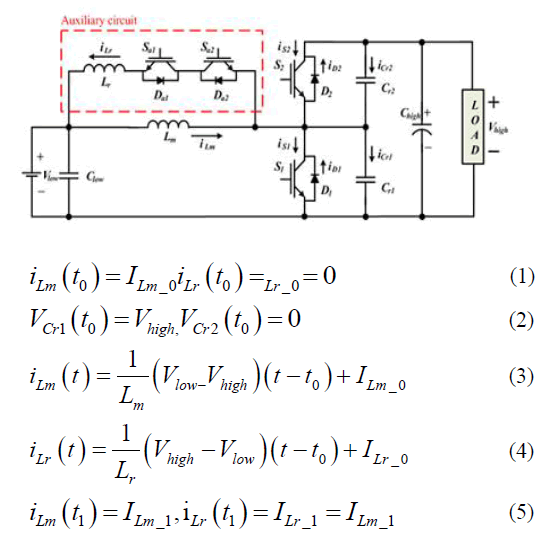 |
| Fig1. Experimental setup of Kirloskar SV1 Engine |
Experimental setup |
| Fig1.Shows the experimental setup that is used for this research, it includes AVL di gas analyser and AVL smoke
meter for measuring the exhaust emissions such as NOx, CO, CO2, HC and smoke. The base engine used in this work is
a single cylinder, water cooled, direct injected, Kirloskar SV1 engine. The engine specifications are shown in table 1.
Which is coupled with eddy current dynamometer for analyse the engine performance and emission parameter with
different brake power. |
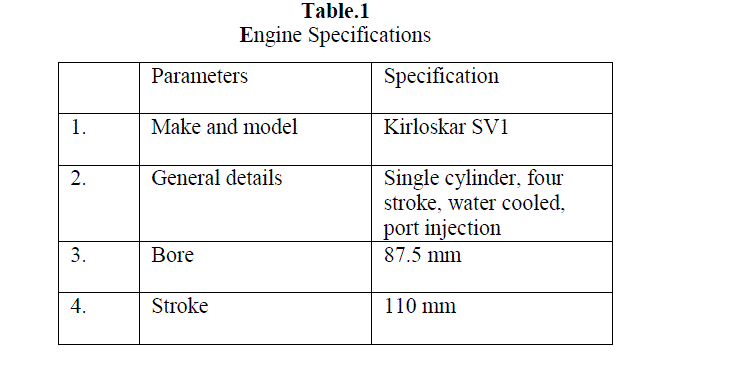 |
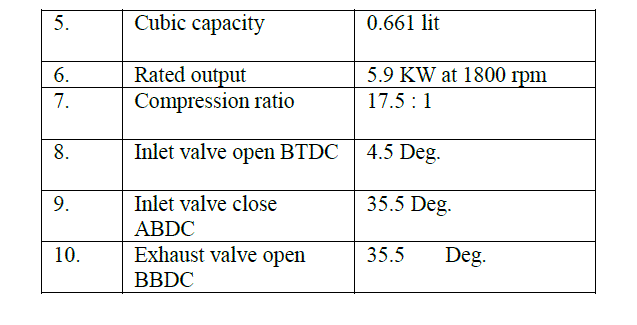 |
Experimental procedure |
| The experimental investigation is carried out in two phases, in this first phase the kirloskar SV1 engine was
operated with diesel fuel in conventional DI mode of operation through a warm up procedure and allowed to operate
the engine with different load and constant engine speed. The specific fuel consumption of DI mode engine was found
by measure the time taken for to consume the 10CC of fuel. Similarly, calculate the specific fuel consumption of the
engine operated with different load conditions. The performance and emissions values of the DI mode engine is
observed and analysed. In this second phase, DI mode engine was switch over HCCI mode engine by cut off the fuel to
DI injector and allows the fuel to flow in the port fuel injector. In HCCI mode of operation the fuel is injected on the
inlet air at intake manifold of the engine. The fuel is injected during the section stroke of the engine by port fuel
injector. The fuel and air mixed together and formed homogeneous mixture before mixture enter to the combustion
chamber. The experimental investigation has been carried out for different load conditions. The performance and
emission values of HCCI mode engine was observed and compared these values to conventional DI mode diesel engine. |
RESULT AND DISCUSSION |
Specific fuel consumption |
| The variation of specific fuel consumption with brake power for both CI and HCCI mode engine are shown in
fig2. The HCCI mode engine has been working with lean air-fuel mixture for all load condition. So it consumes less
amount of fuel compared to convention CI mode engine. The result shown that the value of fuel consumed by the
HCCI engine is much lesser compared to CI mode engine. The diesel fuelled HCCI mode engine gives same power
output as compare to CI mode engine with consume the less amount of fuel. The HCCI mode engine uses
homogeneous air- fuel mixture and it favour for complete combustion and increased combustion efficiency.
Particularly at low load and part load of HCCI mode engine operation have maximum reduction of specific fuel
consumption about 7% and 3% than CI mode engine. |
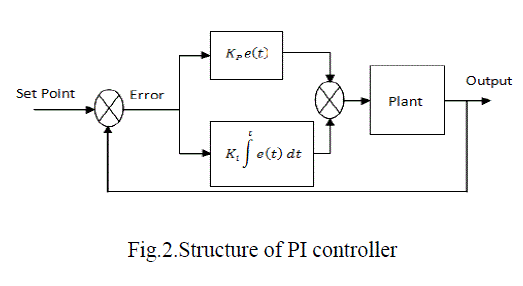 |
| Fig2. Variation of specific fuel consumption with brake power |
Brake thermal efficiency |
| Fig3 shows the variation of brake thermal efficiency with brake power for CI and HCCI mode engines. The
brake thermal efficiency of the engine is depending on calorific value of the fuel used in the engine and depends on rate
of complete combustion. The brake thermal efficiency of HCCI mode engine almost same with CI mode engine for low
and full load operations. At part load operation, the HCCI engine has higher brake thermal efficiency than CI mode
engine. The rate of increasing the brake thermal efficiency is about 3% than CI mode engine. |
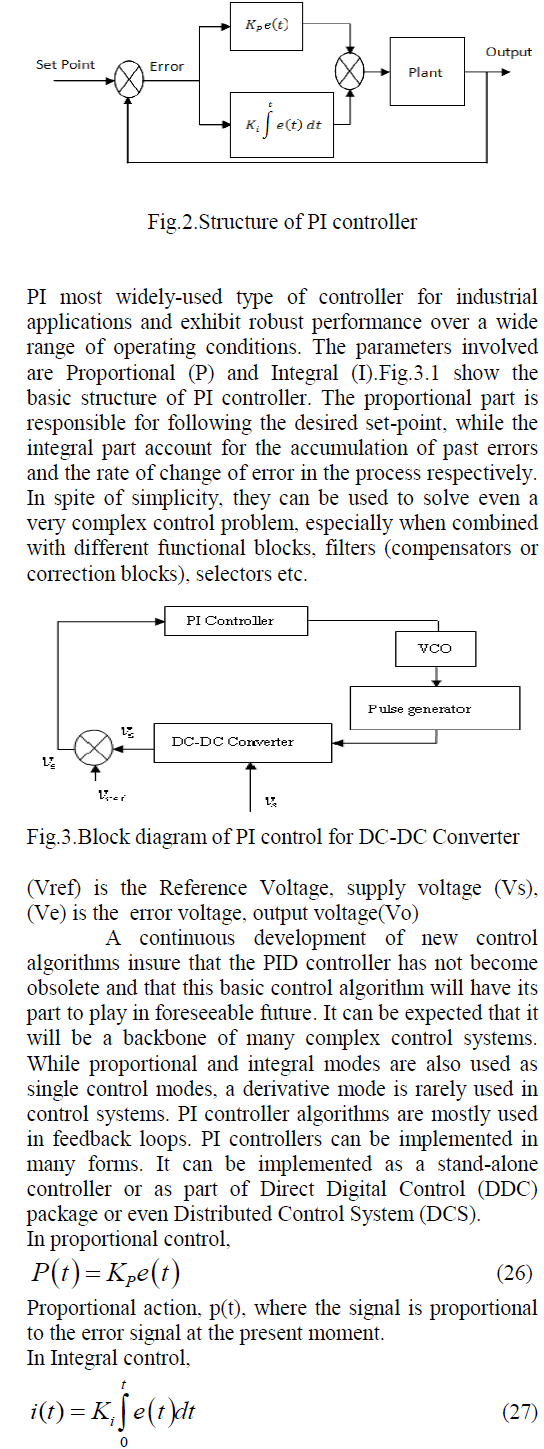 |
| Fig3 Variation of brake thermal efficiency with brake power |
Oxides of Nitrogen (NOx) |
| The oxide of nitrogen (NOx) emission is one of the harmful emission form the CI diesel engine. The NOx
emission is produced due to the presents of higher temperature inside the combustion chamber. The variation of NOx
emission for different loading condition of CI and HCCI mode engine are shown in fig.4. The HCCI mode diesel
engine has lower NOx emission for almost all engine operations. The reason is HCCI mode engine has been working
with lean air-fuel mixture that is the rate of heat released by the engine much lower than CI mode engine. The
maximum reduction of NOx emission is occur at part load engine operation about 16%. |
Particulate matters (PM) |
| Fig 6 shows the particulate matter produced by diesel fuelled CI mode and HCCI mode engine for variation of
brake power. The CI diesel engine has higher smoke emission at low and high load operation. But the part load
operation shows the minimum particulate emissions. |
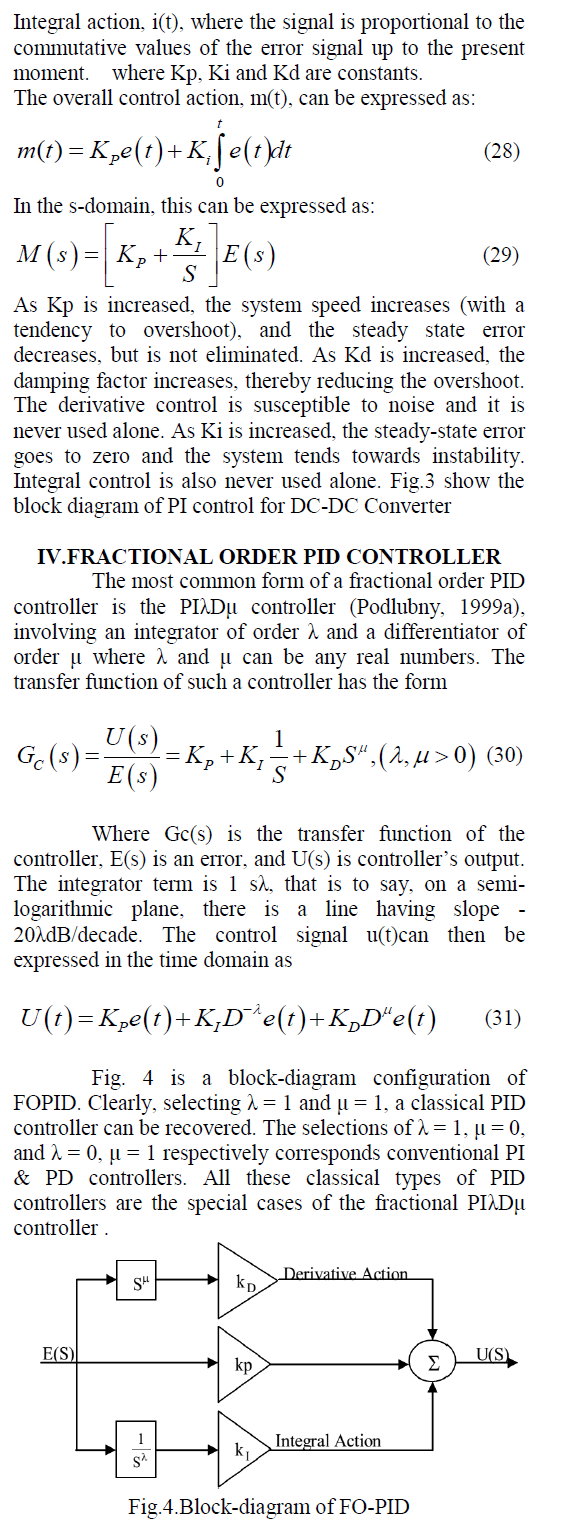 |
| Fig4. Variation of oxides of nitrogen with brake power |
| The smoke emission creates due to the present of insufficient amount of air present in the combustion chamber. In
conventional CI mode engine the fuel is injected 23BTD and combustion starts at end of the compression stroke.
Between the short time the fuel could not mixed with air and create lean and rich air-fuel region. That is lean region has higher amount air and rich region has less amount of air, it produced incomplete combustion and increased the
smoke emission. From the figure it is observed that the HCCI mode engine has lower smoke emission at low loads. |
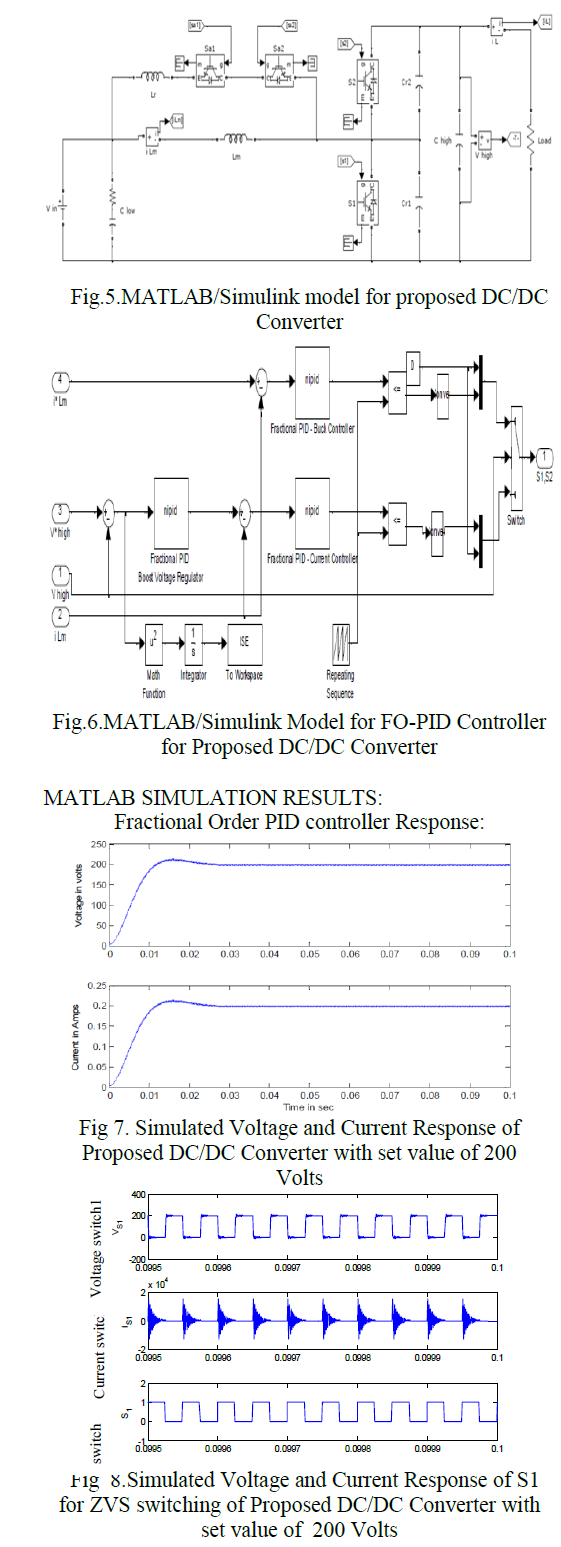 |
| Fig5. Variation of particulates with brake power |
Hydrocarbon (HC) and carbon monoxide (CO) |
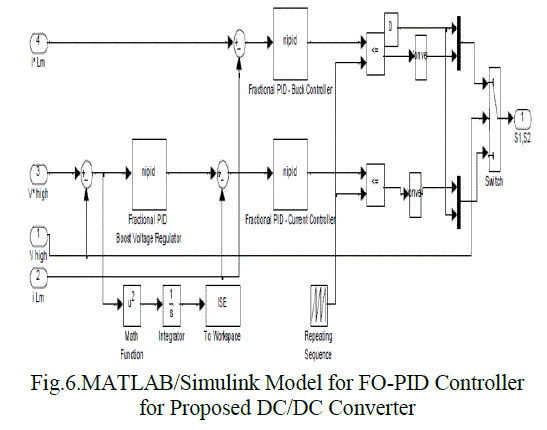 |
| Fig6. Variation carbon monoxide with brake power |
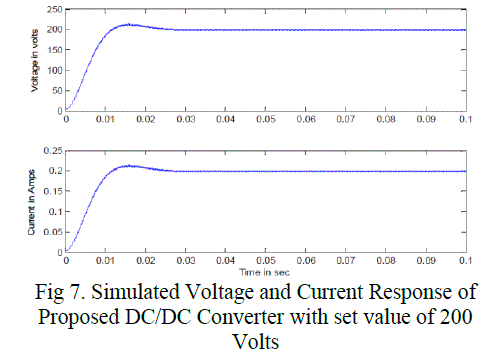 |
| Fig7. Variation of hydrocarbon with brake power |
| The variation of carbon monoxide and hydrocarbon emissions for CI and HCCI mode engine are shown in fig6 and
fig7 respectively. The carbon monoxide emission is produced due to the incomplete combustion, which is occur due to
the insufficient amount of air in the combustion chamber. The figure shows, the CI mode engine has reduced the CO
emission up to part load and then increased with increasing the load. But the HCCI mode engine has lower CO
emissions up to 80% of maximum load and increased for full load. Because of HCCI engine operates with lean mixture,
it has sufficient amount of air for complete combustion in the HCCI mode engine. The HC emission of HCCI engine is
higher than CI mode engine, the HCCI engine has increased the HC emission with increasing the load. |
CONCLUSION |
| The homogeneous charge compression ignition (HCCI) engine is a advanced combustion technology and emitted less
exhaust emissions. The HCCI engine is a suitable replacement for conventional CI diesel engine with improved
performance and reduced the emissions. The conclusion of this research are listed below, |
| •The amount of fuel consumed by the HCCI mode engine is much lower than conventional CI engine. The
reduction of SFC is about 7% and 3% at low and part load operations. |
| •The power output of diesel fuelled HCCI engine is higher than CI mode engine. The improvement of engine
efficiency is about 3% at part load operation of the engine. |
| •The oxides of nitrogen (NOx) emissions of HCCI mode engine are lower than CI mode engine. particularly at
part load the HCCI engine has maximum reduction of NOx emission. At maximum load, both the engine has almost
same NOx values. |
| •The HCCI engine has lower PM emission than CI mode engine. the HCCI mode engine have the maximum
reduction of PM upto part load and increased. The CO emission of HCCI engine is resulted ultra low values for all
operating conditions. And the value of HC is higher for diesel fuelled HCCI engine than CI mode engine. |
References |
- Ganesan V. Internal combustion engine. New Delhi: Tata McGraw-Hill Publishing Company Limited; 2007.
- Epping K,Aceves S,Bechtold R,Dec J.The potential of HCCI combustion for high efficiency and low emissions.SAE Paper 2002-01-1923;2002.
- Christensen M, Johansson B. Influence of mixture quality on homogeneous charge compression ignition.SAE paper 982454;1998.
- Kong SC, Reitz RD. Use of detailed chemical kinetics to study HCCI engine combustion with consideration of turbulent mixing effects .JEng GasTurbinesPower2002;124:702–7.
- Najt PE, Foster DE. Compression ignited homogeneous charge combustion.SAE Paper 830264;1983.
- Kong SC, Reitz RD. Numerical study of premixed HCCI engine combustion and its sensitivity to computational mesh and model uncertainties.Combust Theor Model2003;7:417–33.
- Soylu S. Examination of combustion characteristics and phasing strategies of a natural gas HCCI engine.Energy Convers Manag 2005;46:101–19.
- Killingsworth NJ, Aceves SM, Flowers DL, Krstic M. A simple HCCI engine model for control.IEEE Int Conf Control 2006:1479–84.
- Mack JH, Aceves SM, Dibble RW. Demonstrating direct use of wet ethanol in a homogeneous charge compression ignition (HCCI)engine.Energy 2009;34:782–7.
- Aceves S,Flowers D. Engine shows diesel efficiency without the emissions. Sci Technol Rev2004:17–9.
- Christensen M, Johansson B, Einewall P. Homogeneous charge compression ignition (HCCI) using iso-octane, ethanol and natural gas – acomparison with spark ignition operation.SAE Paper 971676;1997.
- Hiltner J,Fiveland SB, Agama R, Willi M. System efficiency issues for natural gas fuelled HCCI engines in heavy-duty stationary applications.SAE Paper 2002-01-0417;2002.
- Kawano D,Suzuki H,Ishii H,Goto Y,Odaka M,Murata Y,etal. Ignition and combustion control of diesel HCCI.SAE Paper 2005-01-2132; 2005.
- Nathan SS, Mallikarjuna JM, Ramesh A. An experimental study of the biogas- diesel HCCI mode of engine operation. Energy Convers Manag2010;51: 1347–53.
- Yap D, Peucheret SM, Megaritis A, Wyszynski ML, Xu H.Natural gas HCCI engine operation with exhaust gas fuel reforming. Int J HydrogenEnergy 2006;31:587–95.
- Jun D,Ishii K,Iida N.Auto ignition and combustion of natural gas in a 4 stroke HCCI engine. JSME IntJB-Fluid Therm Eng 2003;46:60–7.
- Xie H, Wei Z, He B, Zhao H. Comparison of HCCI combustion respectively fueled with gasoline, ethanol and methanol through the trappedresidual gas strategy. SAE Paper 2006-01-0635; 2006.
- Maurya RK, Agarwal AK. Statistical analysis of cyclic variation of heat release parameters in HCCI combustion of methanol and gasoline fuel.Appl Energy 2012;89(1):228–36.
- Maurya RK, Agarwal AK. Effect of start of injection on the particulate emission from methanol fuelled HCCI engine. SAE Int J Fuel Lubricant2011;4(2):204–22.
- Lü X, Ji L, Zu L, Hou Y, Huang C, Huang Z. Experimental study and chemical analysis of n-heptane homogeneous charge compression ignitioncombustion with port injection of reaction inhibitors. Combust Flame 2007;149:261–70.
- Lü X, Hou Y, Zu L, Huang Z. Experimental study on the auto-ignition and combustion characteristics in the homogeneous charge compressionignition (HCCI) combustion operation with ethanol/n heptane blend fuels by port injection. Fuel 2006;85:2622–31.
- Li HL, Neill WS, Chippior W, Taylor J D. Cycle-to-cycle variation of a HCCI engine operated with n-heptane. In: Spring Technical MeetingCombustion Institute/Canadian Section; 2007.
- Patterson DJ. Cylinder pressure variations, a fundamental combustion problem. SAE Paper 660129; 1966.
- Heywood JB. Internal combustion engine fundamentals. New York: McGraw Hill Press; 1988.
- Xingcai L, Libin J, Junjun M, Zhen H. Combustion stabilities and cycle-by-cycle variations of n-heptane homogeneous charge compressionignition combustion. Energy Fuels 2007;21:1468–73.
- Xingcai L, Libin J, Junjun M, Zhen H. Experimental study on the cycle-by-cycle variations of homogeneous charge compression ignitioncombustion using primary reference fuels and their mixtures. Proc IMechE – Part D J Automob Eng 2007;221:859–66.
- Persson H, Pfeiffer R, Hultqvist A, Johansson B, Ström H. Cylinder-to-cylinder and cycle-to cycle variations at HCCI operation with trappedresiduals. SAE Paper 2005-01-0130; 2005.
- Koopmans L, Backlund O, Denbratt I. Cycle to cycle variations: their influence on cycle resolved gas temperature and unburned hydrocarbonsfrom a cam less gasoline compression ignition engine. SAE 2002-01-0110; 2002.
|